Advanced Biogeometry:
The objective of this seminar was to explore the relationship between biomaterials and geometry – manipulating/profiting from the naturally inherent shape-changing properties of such bio-materials to design environmentally responsive geometries.
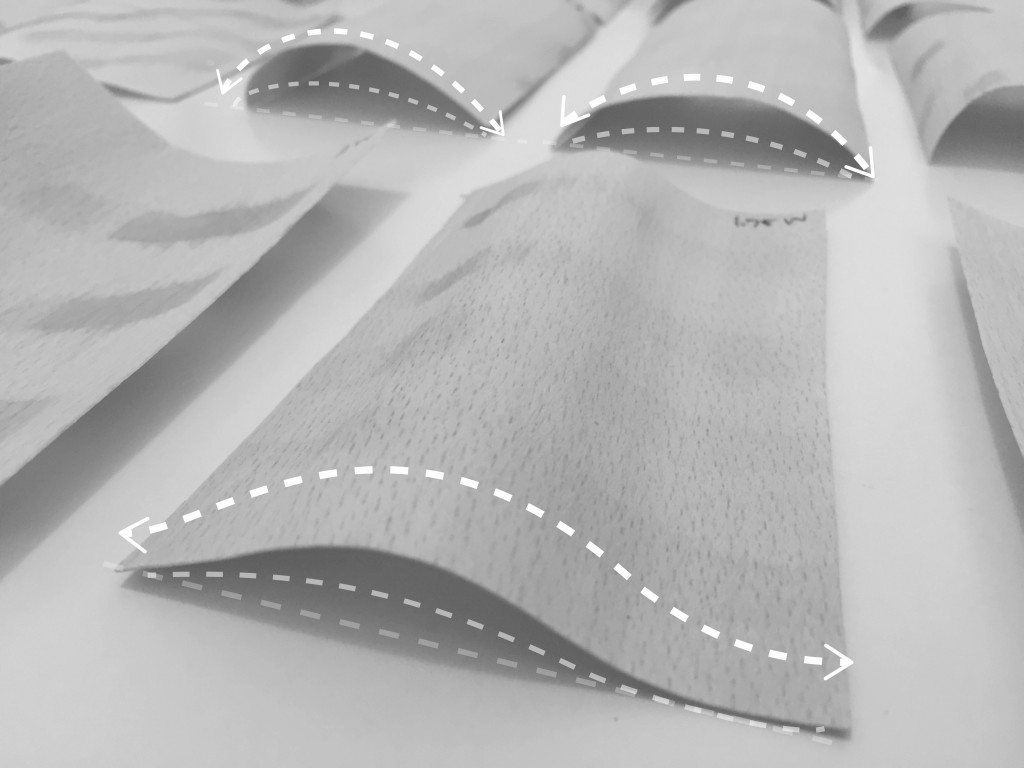
Biomaterials:
Due to the DIY “Covid-19” scenario of material explorations, two commercially accessible materials were selected for testing as an environmentally responsive COMPOSITE material.
Substrate Layer: 0.2mm Pine Veneer
Cellular Layer: Chitosan-based Bioplastic Solution
Environmental Actuator: Humidity
</p>
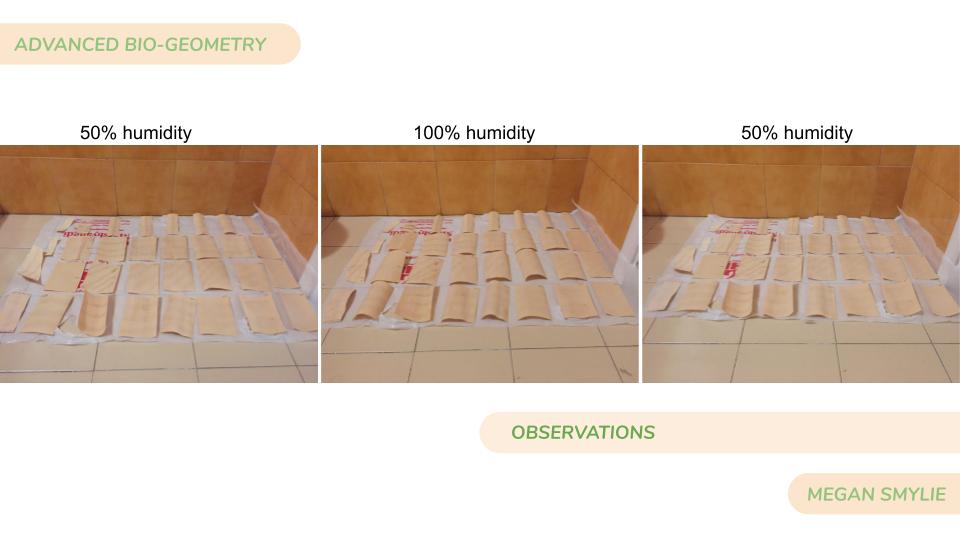
Key Obsevations:
- The side of application is critical in geometry design, as the humidity will cause swelling locally to where it is applied
- The higher the concentration of Chitosan, the greater the deformation, and the longer the duration of the deformation. The retention of water is better, therefore it does not dry out as fast as a pure water solution.
- Application of Chitosan solution ALONG GRAIN causes a sharp folding moment
- Application of Chitosan solution AGAINST GRAIN cause a smooth bending or curving deformation
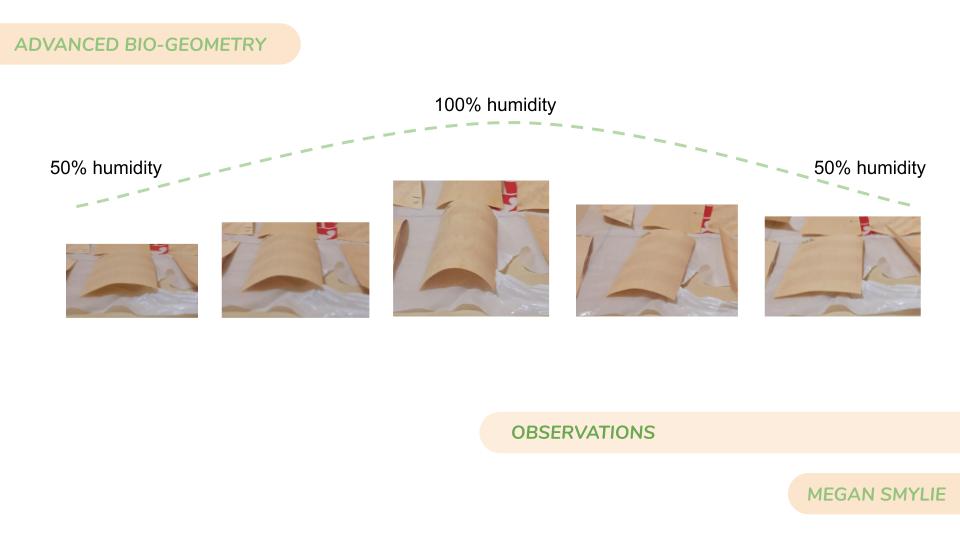
Digital Simulations:
We used Grasshopper modeling with Kangaroo Bouncy Solver to replicate and quantify the observed deformations.
</p>
</p>
Architectural Application:
A “breathing” wall ; responsive ventilation for the envelope of a building or open-air stall.
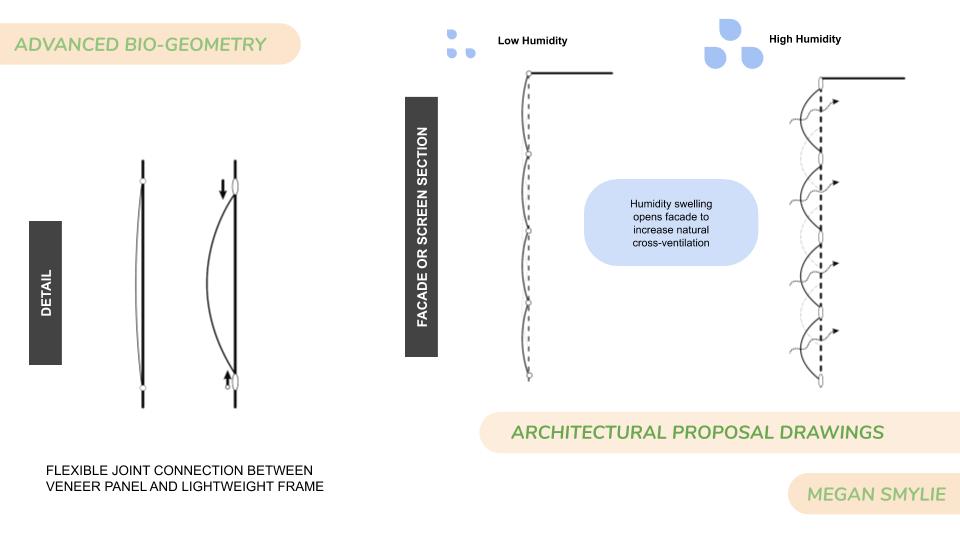
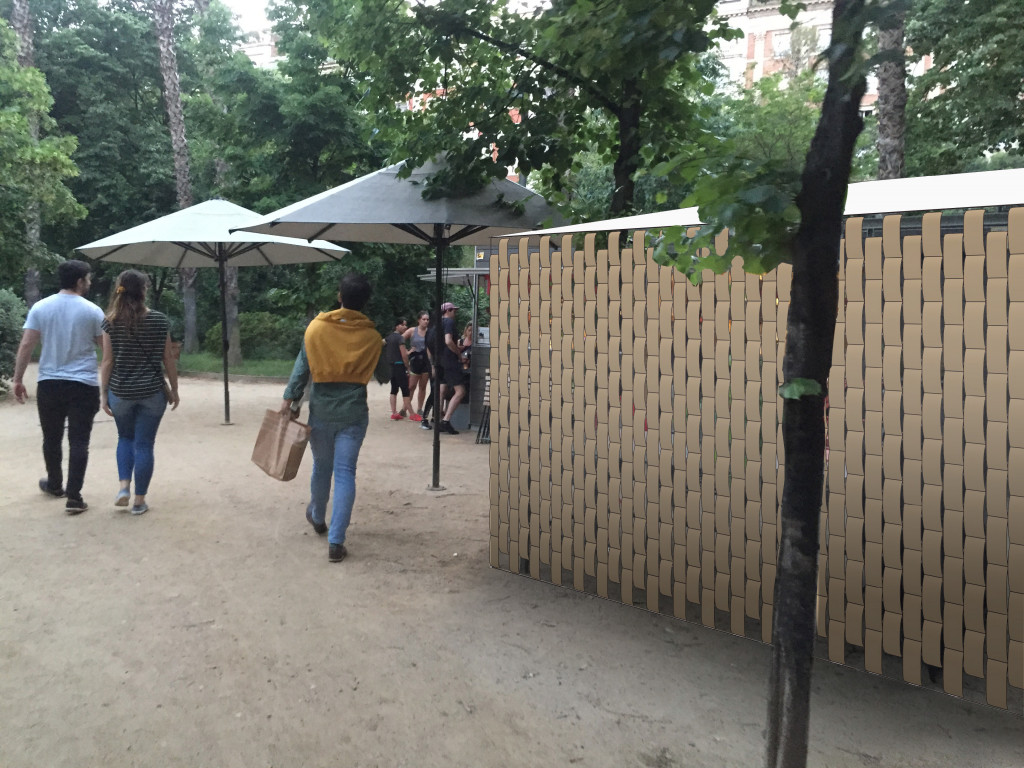
Thank You:
“Designing with Biomaterial Composites” is a project of IaaC, Institute for Advanced Architecture of Catalonia
developed for the Advanced Biogeometry Seminar of the MAA Thesis Program, 2019/2020